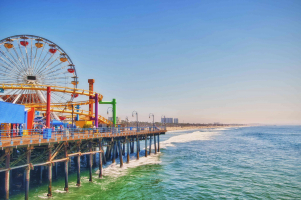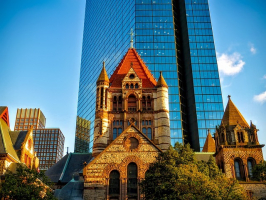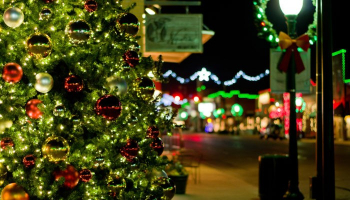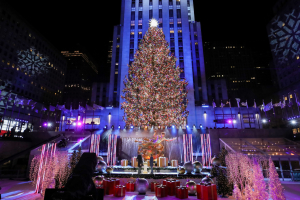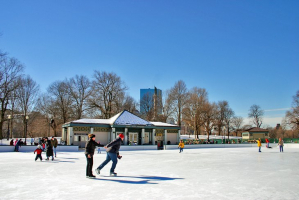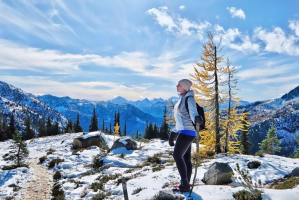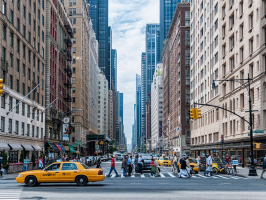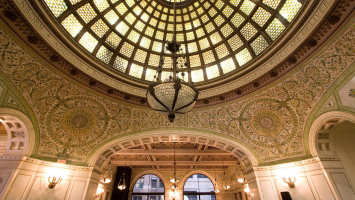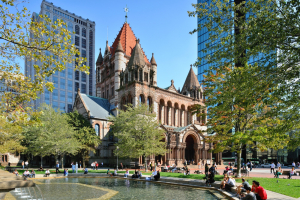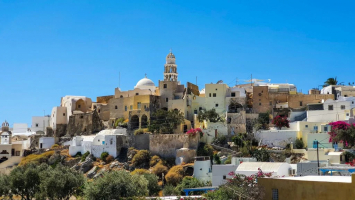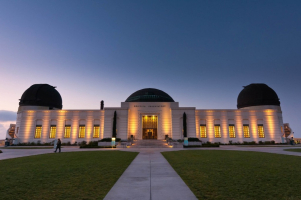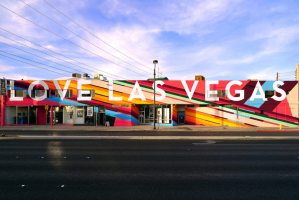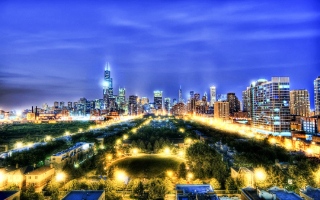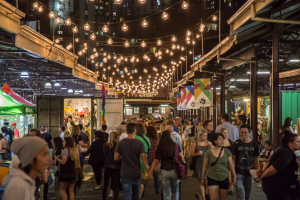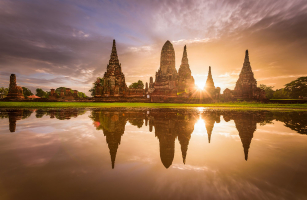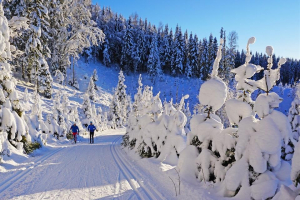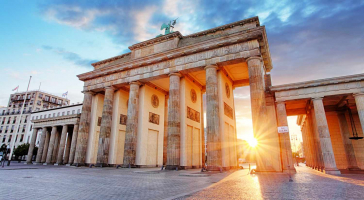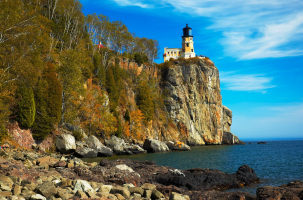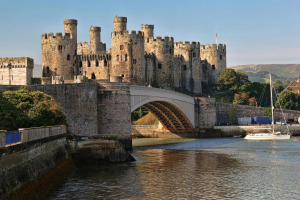Top 10 Best Free And Cheap Things To Do In Los Angeles
Los Angeles can be quite an expensive vacation destination because of the desire to indulge in all the Hollywood glitz and splendor. Fortunately for tourists, ... read more...there are still a ton of free activities to keep you entertained if you're on a tight budget. You'll find it's not difficult to visit the City of Angels without breaking the bank thanks to all the beaches, gardens, and free entertainment alternatives. Many of the most well-known tourist attractions don't charge entry. Toplist will synthesize a list of the best free and cheap things to do in Los Angeles for you!
-
The Venice Canals, which are tucked between the frantic Venice Boardwalk and the upscale Abbot Kinney, present an entirely different aspect of the renowned beachfront region. A trip around these three canal-lined streets, which give Venice its name, will reveal a picture-perfect landscape with sweeping pedestrian bridges, quaint beach cottages, swarms of ducklings, and the occasional bulldog paddleboarding. That is one of the Best Free And Cheap Things To Do In Los Angeles.
The canal district remained dilapidated for more than 40 years as various plans to rebuild the canals fell through owing to budget issues, environmental issues, and disagreements over who should be responsible for the cost. In 1992, the Venice Beach Canals underwent their long-awaited renovations, which included draining the canals and constructing new walls and sidewalks. Since their reopening in 1993, the canals have developed into one of the city's most coveted and pricey neighborhoods. In 1982, the neighborhood with homes close to the remnant canals was added to the National Register of Historic Places. However, several of the older homes have undergone major renovations recently, and a number of sizable, contemporary homes have also been constructed. Through sea gates in the Marina Del Rey breakwater and once more on Washington Boulevard, the water enters the canals. When the tide is high, they are closed, retaining the water for roughly three days before being replenished again. They open at low tide to drain the majority of the water.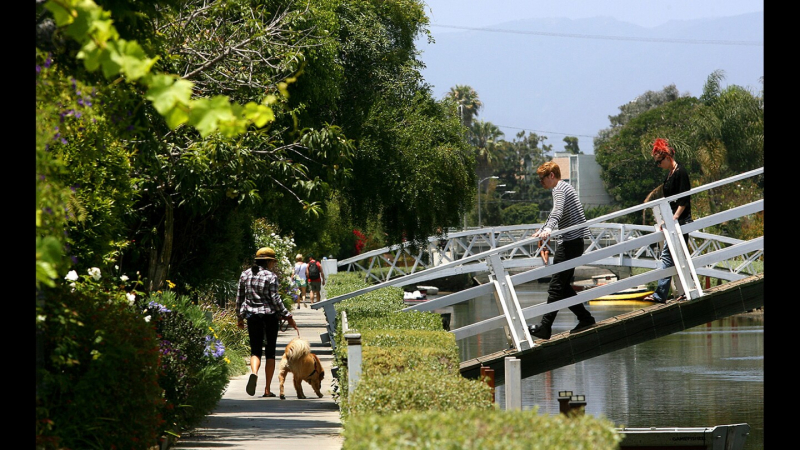
latimes.com 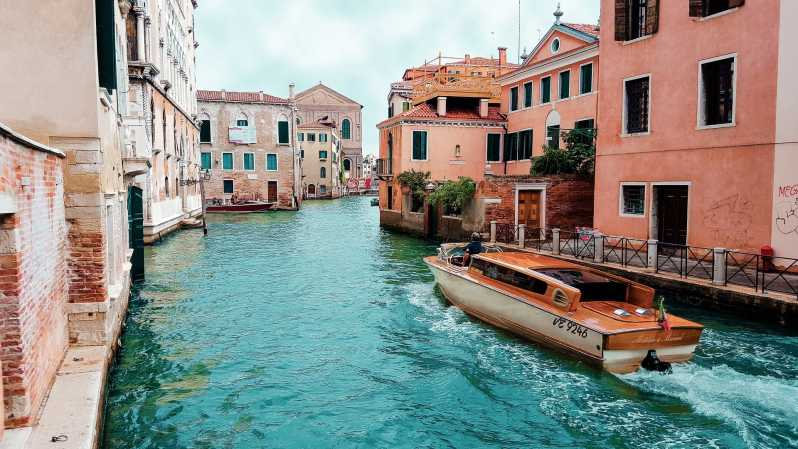
latimes.com -
Infinity Mirror Rooms, in three words. Two of Yayoi Kusama's immersive, mirror-filled rooms are featured in downtown's perennially well-liked modern art museum (one that you merely peek into, another more immersive one that you step into). The free museum also houses the 2,000 post-war works owned by Eli and Edythe Broad, including pieces by Andy Warhol, Roy Lichtenstein, Ed Ruscha, Cindy Sherman, Barbara Kruger, Jean-Michel Basquiat, and Jeff Koons. Otium, the museum's trademark restaurant from former French Laundry chef Timothy Hollingsworth, is located in front of a gorgeous olive tree grove in the plaza outside the building.
The museum has been a fascinating addition to Los Angeles's collection of institutions, even though at times its exhaustive survey of expensive gallery prizes can feel a bit too secure (with some spectacle pieces mixed in). The gallery experience is enjoyable, but the vault and veil design looks much heavier and more opaque than it should. However, there is one design feature that we absolutely adore: the window that spans two stories and provides a glimpse into the collection storage.A debut show at The Broad in 2015 included works by Jasper Johns, Cy Twombly, Barbara Kruger, Andy Warhol, Roy Lichtenstein, Keith Haring, and other 20th-century rock icons, along with a ton of Jeff Koons. The Visitors, a stunning nine-screen video installation by Ragnar Kjartansson, and Yayoi Kusama's Infinity Mirrored Room, which featured an unending field of LEDs, were two standout installations.
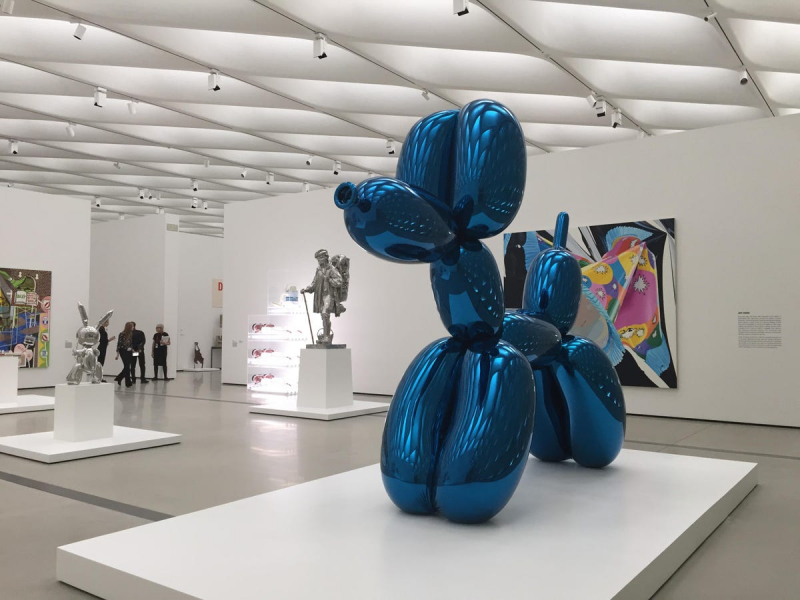
forbes.com 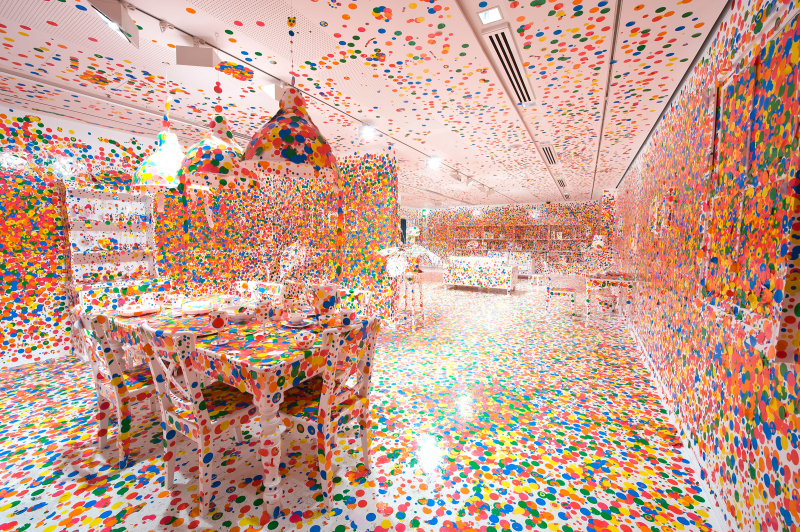
forbes.com -
A hike or picnic at the Hollywood Bowl is one of the best free and cheapest things to do in Los Angeles. The famous amphitheater serves as a kind of hidden county park. You are able to park for free and explore the grounds at your leisure as long as the location isn't hosting a performance (an admittedly uncommon event from July to September). Walk into the seating area where you might see people working out on the stairs or, if you're lucky, an open LA Phil rehearsal on summer mornings (classical shows typically take place on Tuesdays and Thursdays, but the schedule varies, so it's best to call 323-850-2000 to confirm). You can also hike all the way up the hilly surroundings to take in the views.
One of the best concert venues in the country is the Hollywood Bowl. Since it was opened in 1922, it has hosted a great number of renowned performers. If you haven't gone, you should definitely check out a concert there, but many people are unaware that the famed location is also a public park where you may visit and explore it during the daytime, presuming no rehearsals are going on.
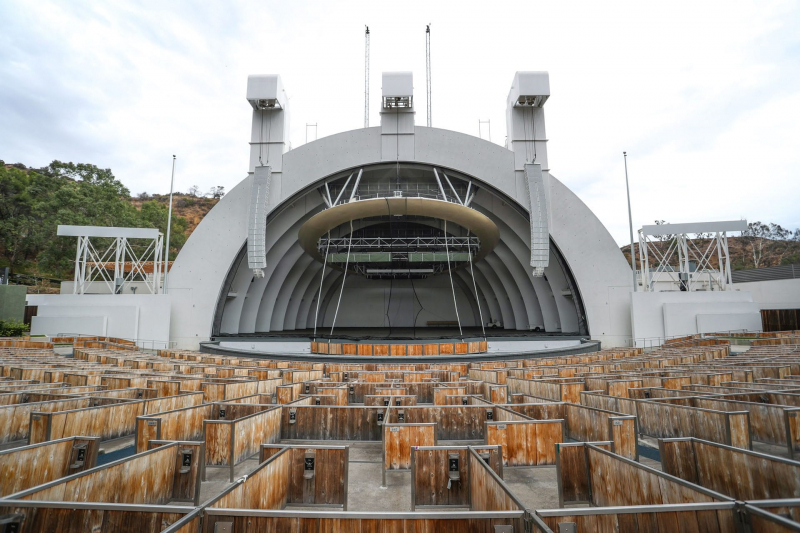
latimes.com 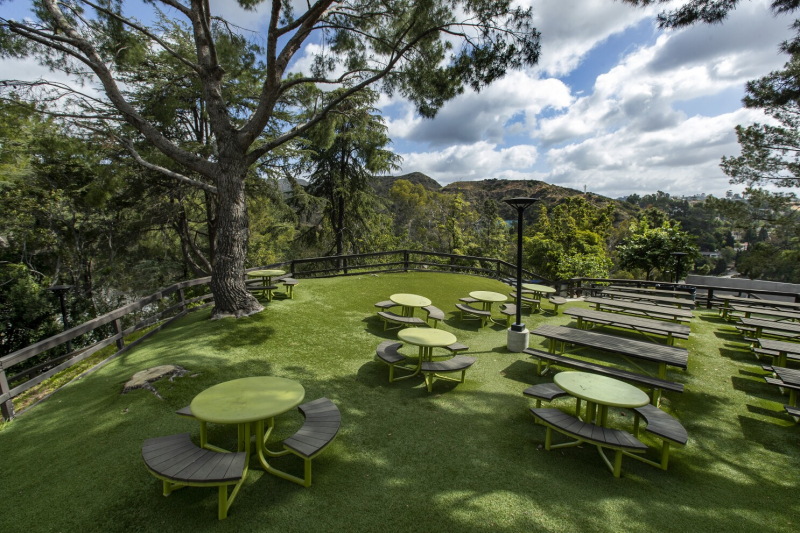
latimes.com -
One of the most well-liked hiking spots in Los Angeles is Runyon Canyon Park, which frequently appears on lists of the top treks in LA, that is one of the best free and cheapest things to do in Los Angeles. On the eastern edge of the Santa Monica Mountains in Hollywood, this 130-acre dog park offers hikers a couple overlapping loops and stunning views of the city.
Along with a number of dirt hiking routes, this 160-acre park at the eastern tip of the Santa Monica Mountains contains one main loop. During the peak morning and weekend workout traffic, the sea of buff trainers and their sleek, sweaty clients can become overwhelming, but you'll be rewarded with some of the best views of the city (and, if you're lucky, a chance to ogle power-walking celebrities). If you just want to take in the scenery and don't want to hike, go to the northern gate on Mulholland Drive, which is close to the summit.
Runyon Canyon Park is a busy park, so if you're a trail snob wanting solitude, lower your expectations or choose another hike in the Los Angeles area. Runyon Canyon is ideal if you want to get some exercise outside and observe people at the same time.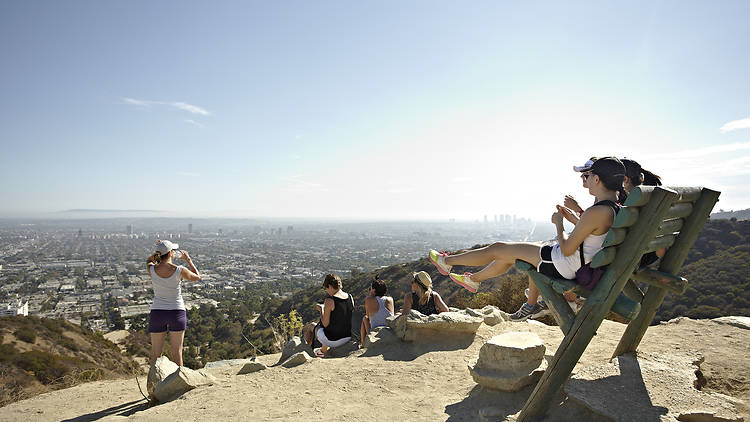
timeout.com 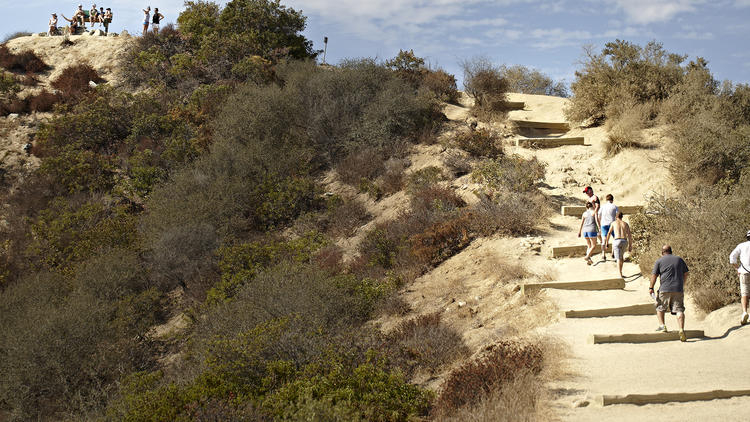
timeout.com -
For many years, the great art collection of the J. Paul Getty Trust was housed in what is now known as the Getty Villa. However, the Getty Center debuted in 1997. The finished result is a magnificent complex of white metal and travertine-clad pavilions that displays identifiable Impressionist artwork, opulent French furnishings, and changing exhibitions. Free entrance and expansive views that go from the hills and the beach in the west all the way around to Downtown in the east more than make up for its relative accessibility.
One thing becomes clear after parking at the base and riding the electric tram up the hill: It's a vast location, with artwork on show in four permanent pavilions, an exhibition space, and the nearby Getty Research Institute. The Impressionist artwork in the West Pavilion, especially Van Gogh's Irises, never fails to draw large crowds. Only the East Pavilion's recreations of baroque rooms can compare to the South Pavilion's French decorative arts across the street. A number of Rembrandt masterpieces may be seen on the upper floor of that structure, so make sure to get there. The only artwork in the North Pavilion, which dates exclusively from before 1700, is a collection of illuminated manuscripts on the ground floor.
Without ever entering a gallery, you may leisurely meander through the Getty's numerous courtyards, overlooks, and fountains and still feel content. The main attraction is Robert Irwin's Central Garden, which features a cascading stream and a lush maze of hedges and walkways. Just past it is a garden with contemporary sculptures. The cactus garden in the southeast corner provides a postcard-perfect vista of the city with a cluster of cacti in the foreground. Post up on any of the west-facing terraces of the pavilion for the best sunset views (if you can see the Central Garden and the mountains along the coastline, you're gazing in the right direction).
Most tourists should be able to get by with the lively cafe by the entry and another one next to the Central Garden, while the Restaurant (reservations advised) offers sit-down service for a more leisurely, opulent lunch. We would choose the most laid-back alternative; if you prefer the most laid-back choice, bring a picnic and set out a blanket on the museum's sloping, south-facing lawn.
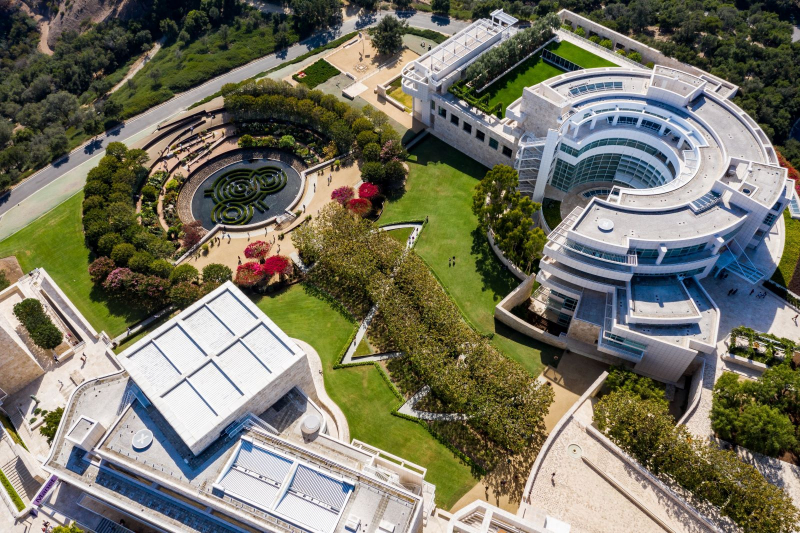
blogs.getty.edu 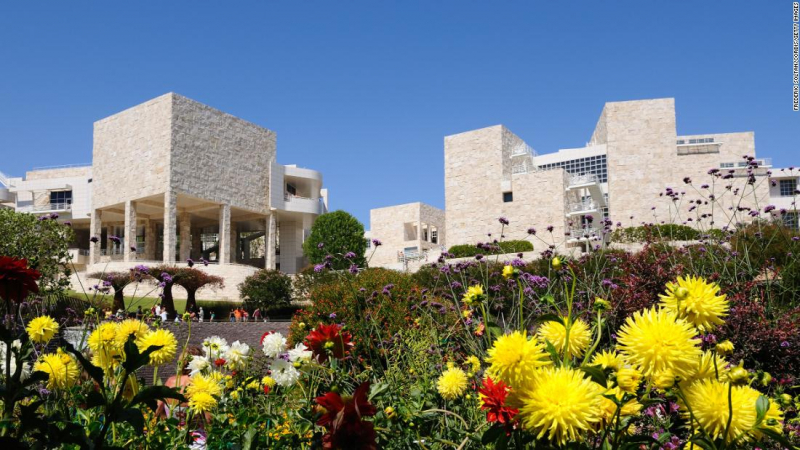
blogs.getty.edu -
The grounds around the Observatory are accessible every day, but the museum is only open on Friday through Sunday. The view from here is breathtaking, especially at night when Los Angeles is illuminated below. There are numerous displays inside, including a Tesla coil, a Foucault pendulum, and a planetarium presentation. Give yourself plenty of time before the roof-mounted 12-inch refracting telescope closes at 10 p.m.; otherwise, visit the front lawn's much less congested modern reflecting telescope. Just wanted to let you know that parking is now between $8 and $10 per hour, even though you can take the DASH bus up there for only 35 cents.
The displays and performances here are long enough to last you an hour or two. The Foucault pendulum, located directly beneath Hugo Ballin's renowned mural on the central rotunda, the handsome, cutting-edge Samuel Oschin Planetarium, and the complementary Hall of the Sky and Hall of the Eye exhibits are all located on the ground floor. These exhibits focus on how humans relate to the stars. The Cosmic Connection Corridor's cheesy jewelry displays lead down to the downstairs, where there are a variety of other brand-new exhibits.
You can watch a brief movie at the Leonard Nimoy Event Horizon Theater on the observatory's past and recent revival. The impact that meteorites and other falling debris have had on Earth is vividly and illuminatingly described in Pieces of the Sky. The Gunther Depths of Space has a bronze bust of Albert Einstein, clear descriptions of the planets, and a massive 2.46-gigapixel image of the night sky that was captured by the Palomar Observatory in San Diego County. Additionally, the Café at the End of the Universe serves above-average munchies.
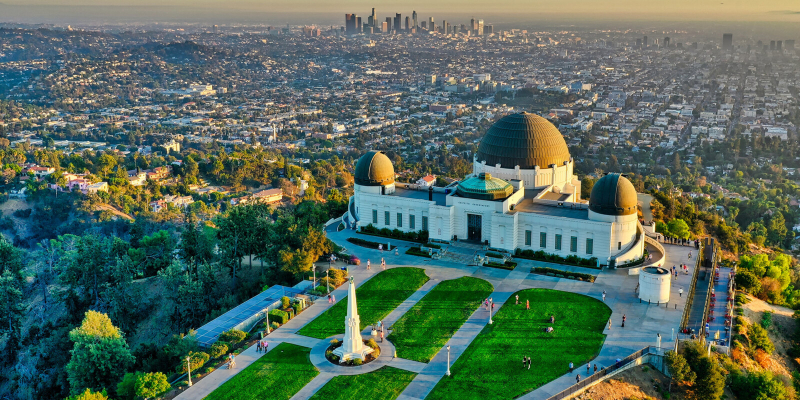
griffithobservatory.org 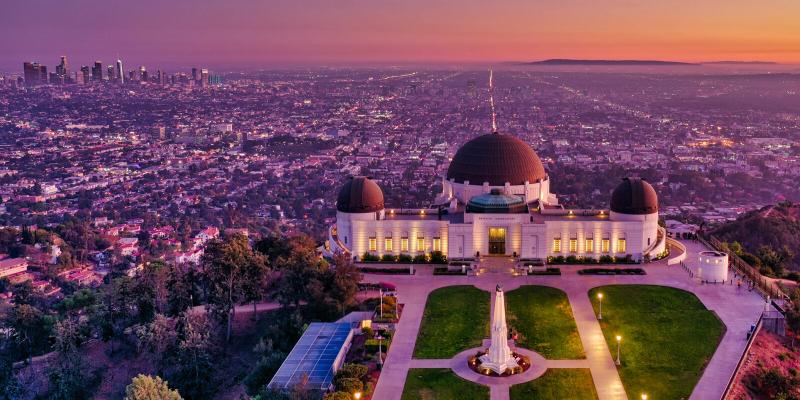
griffithobservatory.org -
The Space Shuttle Endeavour, which was very publicly paraded through Los Angeles to go to its temporary home at the Samuel Oschin Pavilion—a permanent building slated to exhibit the ship upright is in the works—is the main draw at this family-friendly museum. Even though Endeavour and the rest of the museum are free to see, reservations are required and cost $3. If you choose to pick up your ticket at the box office, you can save the cost, but there is a chance that you won't get a reservation, particularly on weekends.
The California Science Center, a merger of two long-running previous facilities, debuted in 1998 in a light, airy structure immediately in front of the Rose Garden in Exposition Park. Endeavour, the museum's most recent acquisition, is without a doubt the star here. The last space shuttle to be built, Endeavour instills a reach-for-the-stars spirit unlike any other exhibit in the city. The Endeavour spacecraft was manufactured in Palmdale, California, and traveled about 123 million miles before finding its final resting place in the museum. This gives the story an uniquely local flavor. Other permanent exhibit galleries in the museum—World of Biological, Creative World, and the SKETCH Foundation Gallery with air and space exhibits—explore life sciences, human ingenuity, and powered flight, though with a very '90s flair. By taking a practical look at Earth's biomes, from the poles to life in our own backyard, the Ecosystems wing tackles science. Children almost solely like the various interactive exhibits; otherwise, childless adults may find the majority of the museum to be overly crowded, disorganized, and, well, dull.Other highlights of the exhibit include Tess, the 50-foot body simulator and star of the Body Works show, the Kelp Tank, which is home to 1,500 live fish, kelp, and other marine life, the High-Wire Bicycle, which is always a hit and lets daredevils ride a bike along a one-inch wire 43 feet above the ground to demonstrate the force of gravity, and actual space capsules from the Mercury, Gemini, and Apollo-Soyuz missions. Temporary displays and an IMAX theater that regularly shows stunning, ostensibly informative, nature-themed movies offer additional amusement.
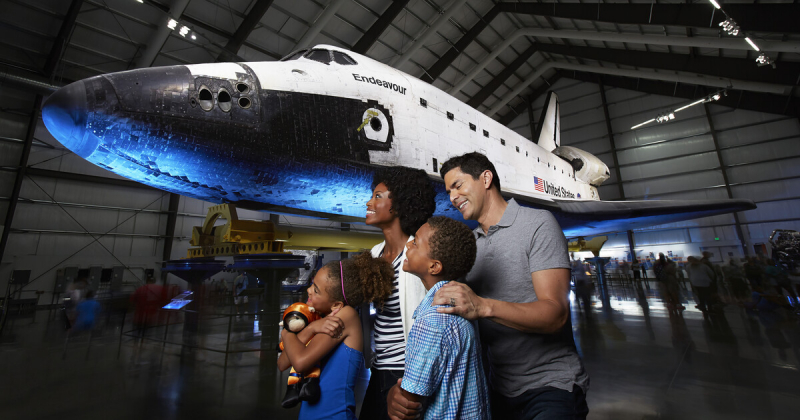
californiasciencecenter.org 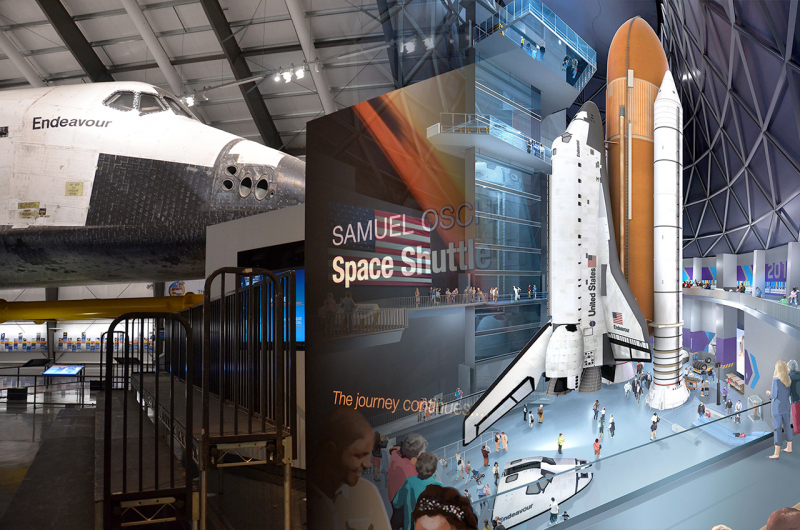
californiasciencecenter.org -
The Korean Bell of Friendship, also known as the Korean Friendship Bell, is a sizable bronze bell located in Angel's Gate Park in the San Pedro section of Los Angeles, California, and is one of the best free and cheapest things to do in Los Angeles. It is housed in a stone pavilion. The area of the park that used to be the Upper Reservation of Fort MacArthur is now known as the "Korean-American Peace Park" and is situated near the intersection of Gaffey and 37th Streets.
It is based on the King Seongdeok the Great of Silla's Divine Bell, also known as the Emille Bell, which was made in 771 for Bongdeok Temple and is currently housed in Gyeongju's National Museum. Both of these bells rank among the largest in the entire globe, with the Emille Bell being the largest bell ever cast in Korean history. For improved tone quality, gold, nickel, lead, and phosphorus were added to the bell's almost seventeen tons of copper and tin alloy. It measures 712 feet in diameter, 8 inches on average in thickness, and 12 feet in height. Four pairs of figures are depicted in relief and are lavishly adorned on the outer surface. A "Goddess of Liberty" (resembling the Statue of Liberty in some ways) and a Seonnyeo, or Korean spirit figure, carry the South Korean national symbols, the Taegeuk emblem, a rose of Sharon branch, a laurel branch, and a dove, respectively, in each pair.
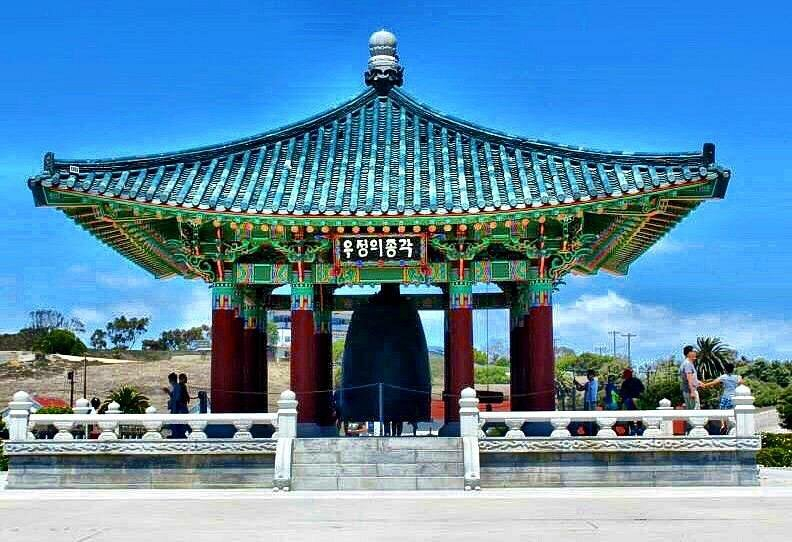
tripadvisor.com 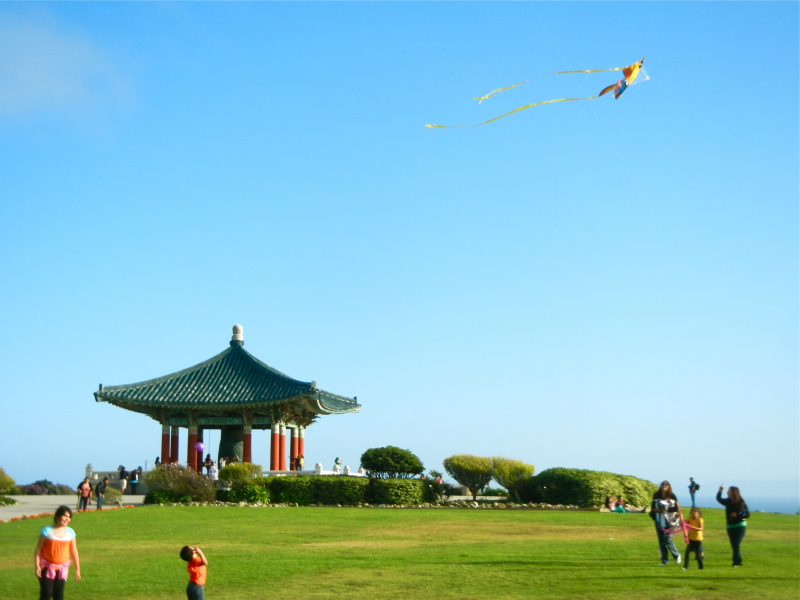
tripadvisor.com -
A non-denominational organization that welcomes tourists but doesn't proselytize to them runs the mystical, enigmatic Self-Realization Fellowship Lake Shrine, which is conveniently located just inland from the Pacific Coast Highway and simple to miss when you're rushing to watch the sunset. The magnificent gardens, which are located on a ten-acre location that was once a silent-era movie set, are reminiscent of old Hollywood. Keep an eye out for the Dutch windmill chapel, the Mississippi houseboat, and several gliding swans. A shrine containing some of Gandhi's ashes is enclosed by a gilded lotus gate, which symbolizes the East.
Information about Lake Shrine is available in the visitor center. White swans cross the lake, lacy fern grottos, lily ponds, statues, fountains, waterfalls, flowerbeds, and a Dutch windmill that serves as a chapel are all there. The Om symbol for Hinduism, the Star of David for Judaism, the Wheel of Law for Buddhism, the crescent moon and star for Islam, and the cross for Christianity are all shown in the Court of Religions, which honors the five major global religions. Yogananda held that all religions are fundamentally in harmony with one another. Above the waterfall, there is a life-size figure of Jesus Christ, Francis of Assisi, the Madonna and Child, as well as a few statues of Krishna and other Hindu deities.
All areas of the grounds may see the golden lotus archway, a tall, slender, white arch edged with blue tile and capped with gold lotus petals. The archway surrounds the Mahatma Gandhi World Peace Memorial, an outdoor memorial housing a portion of Mahatma Gandhi's ashes in a genuine 1,000-year-old Chinese stone sarcophagus. The gardens are full of tiny brick pathways and short staircases that branch off the main route and lead to secret alcoves where one can sit and meditate or simply take in the scenery. The gift shop, which is close to a museum devoted to Paramahansa Yogananda, the man who founded Lake Shrine, sells Indian arts and crafts. A houseboat, a bookstore, a Dutch windmill that has been transformed into a chapel, and a temple that overlooks the lake are also present.
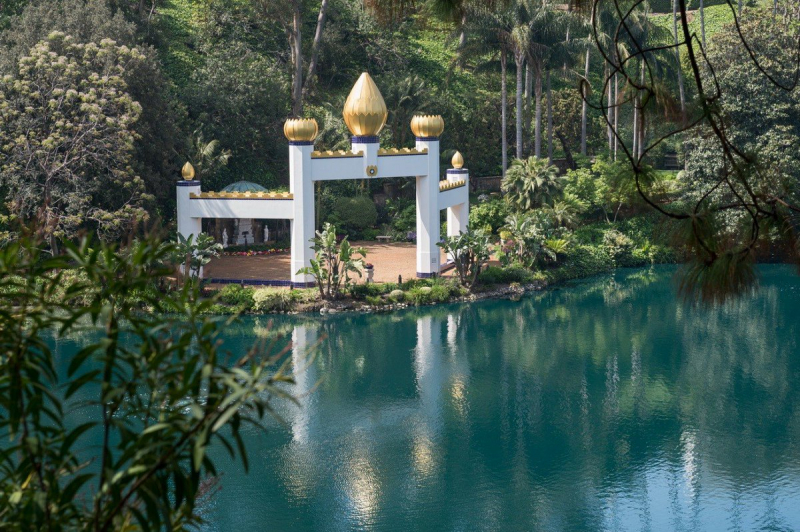
travelswithmaitaitom.com 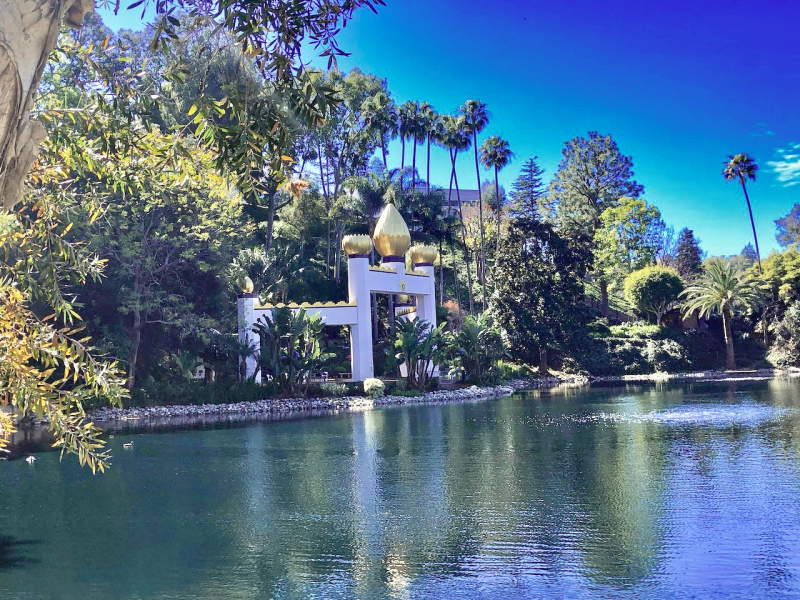
travelswithmaitaitom.com -
Know this: Any stretch of sand below the high tide line is accessible to the general public, despite the best efforts of some Malibu locations to gatekeep their exclusive coastlines. However, parking is a very different animal. Westward Beach is our preferred parking location because you can avoid the expensive lots at Zuma and Point Dume and look for free all-day street parking along this stretch between the two instead. However, those beaches are not even close to as big as this one. There are plenty of sites accessible along the Pacific Coast Highway and in the posh districts further up the Malibu shoreline.
The Los Angeles County Fire Department's lifeguard division guards Zuma, with 14 towers on the actual dunes and one of the four L.A. County Section Headquarters in the middle of the beach. Rip currents are present at Zuma, just like they are at many beaches with good surf. The region in front of the Lifeguard Headquarters between Towers 8 and 9 is particularly vulnerable to rip currents, thus visitors are advised against swimming or surfing there. Rip currents are so common, in fact, that as of 2007, the Los Angeles County Fire Department Lifeguard Unit utilizes Zuma Beach to represent one. Every year, Zuma Beach plays host to various prestigious surfing competitions. On the northern end of Zuma Beach, where wind conditions are ideal virtually every day in the late afternoon, kitesurfing is very popular.
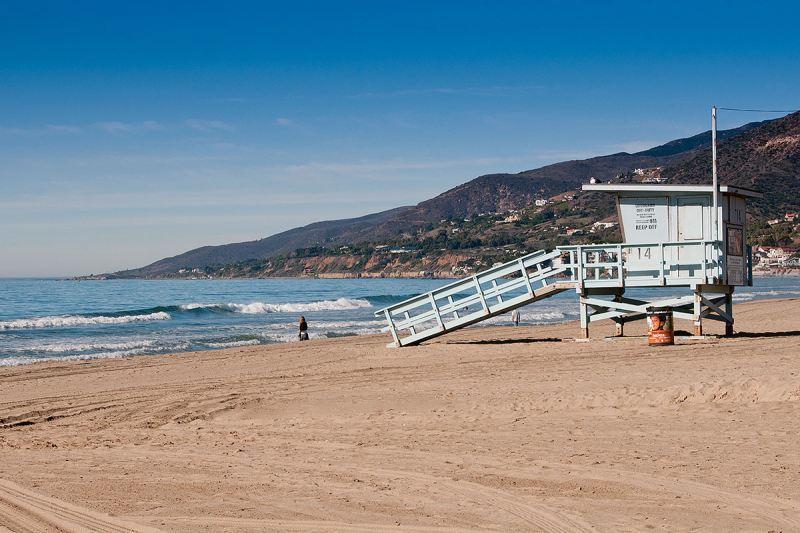
beaches.lacounty.gov 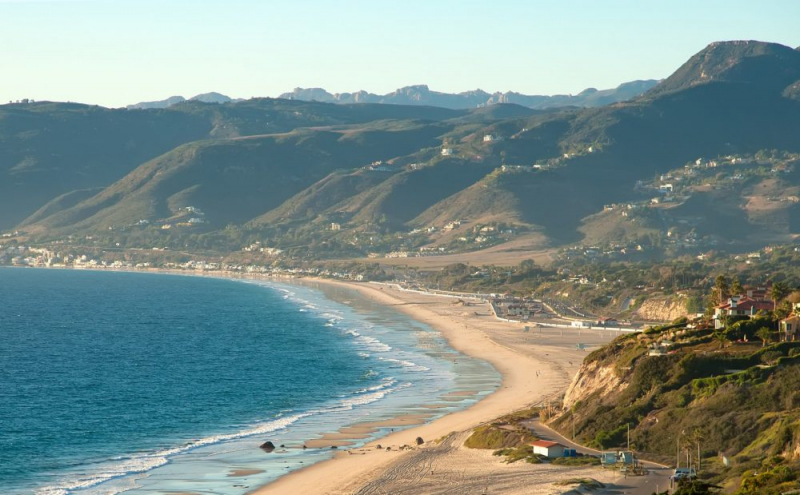
beaches.lacounty.gov












